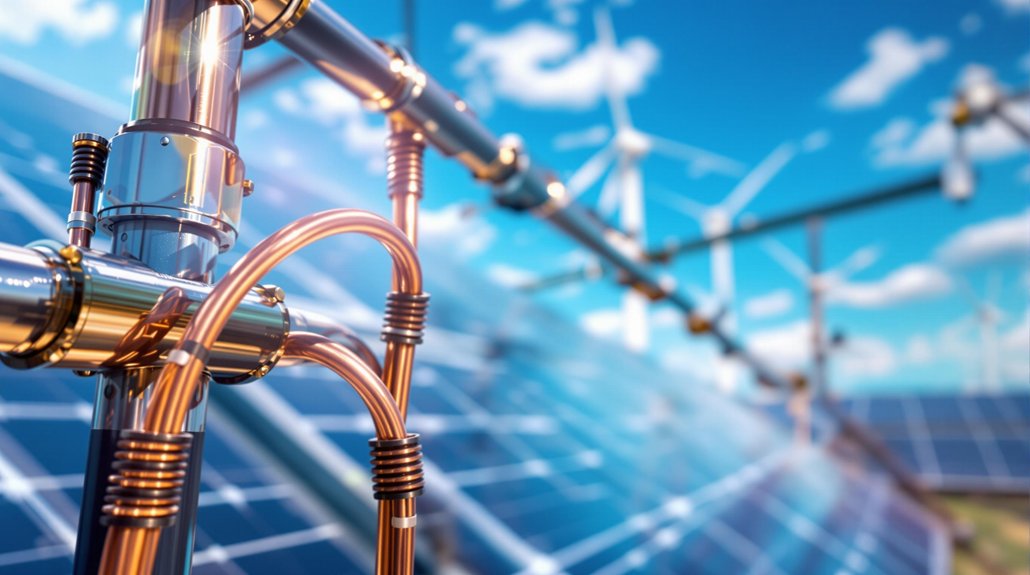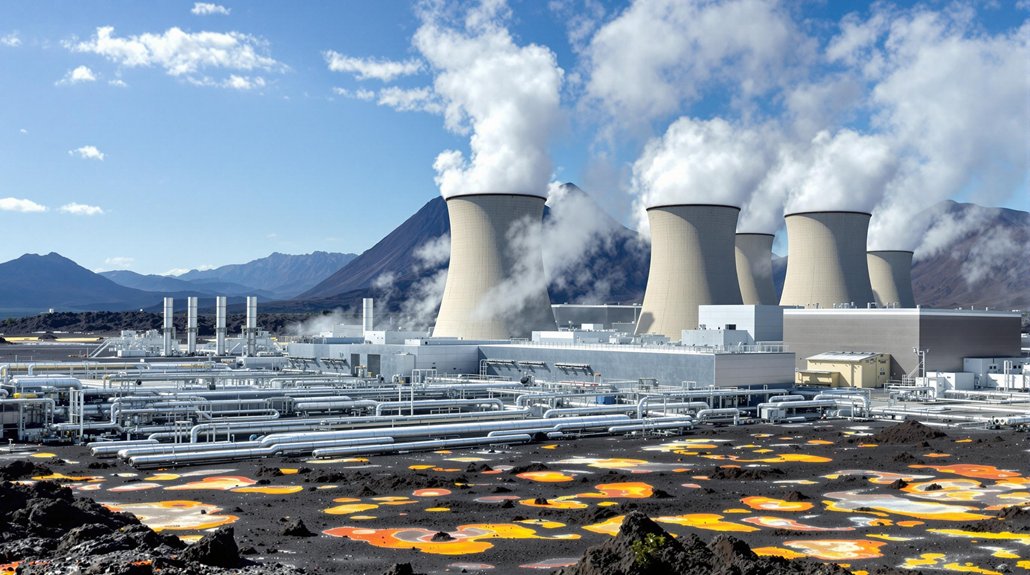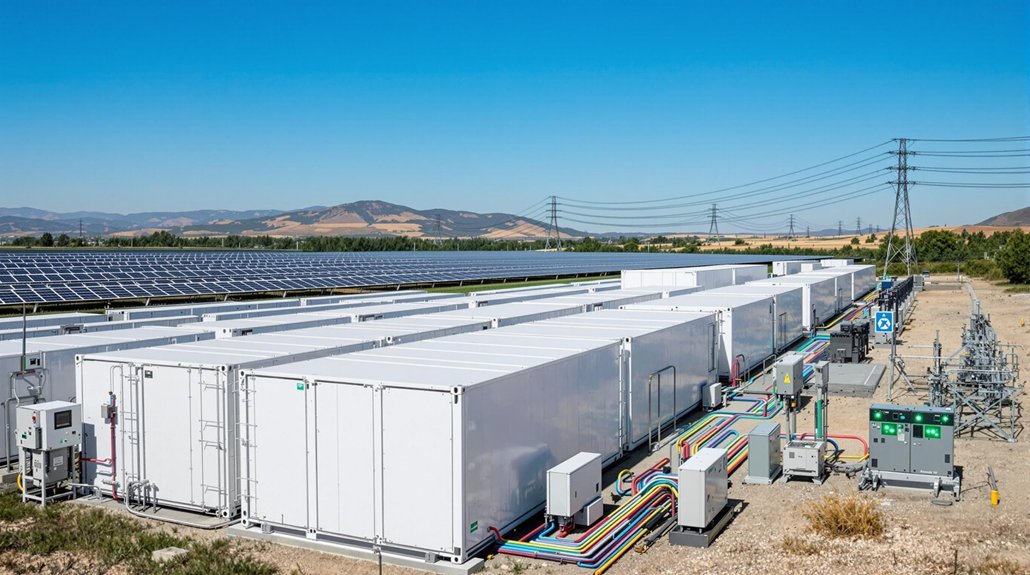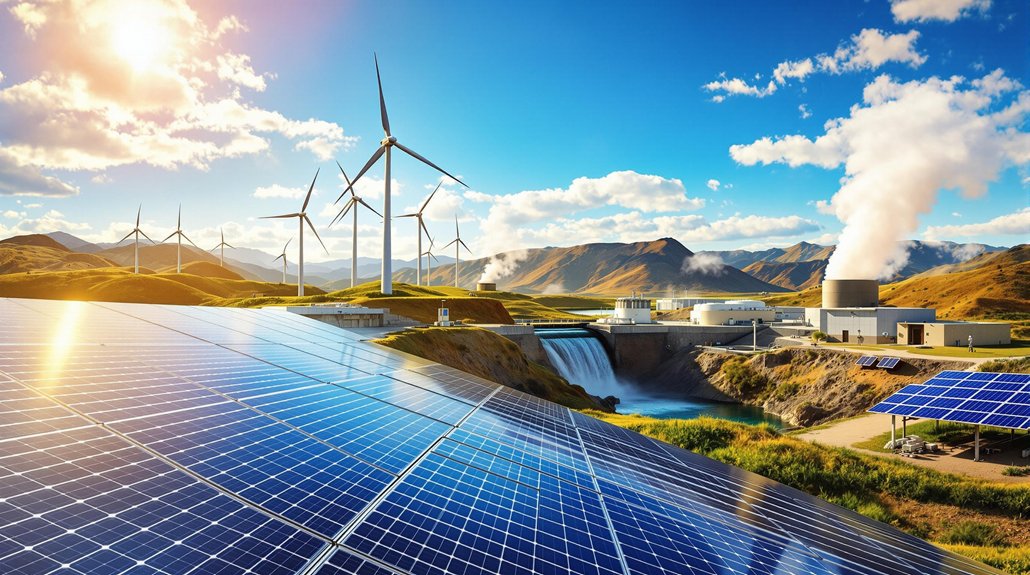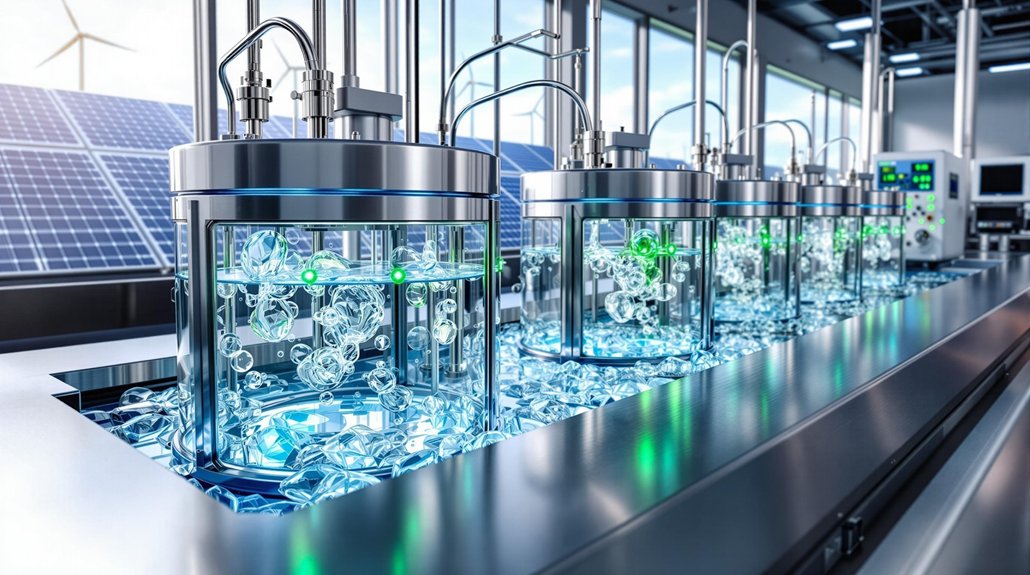Copper plays a vital role in renewable energy systems, using 4-6 times more metal than traditional power generation. Solar panels need 5.5 tons per megawatt, while wind turbines contain 4-6 tons each. It’s essential for wiring, interconnections, and transformers that enhance efficiency. The global copper scrap market, valued at $60.02 billion in 2021, is expected to grow 5.2% annually. This 100% recyclable metal offers sustainable solutions for our clean energy future.
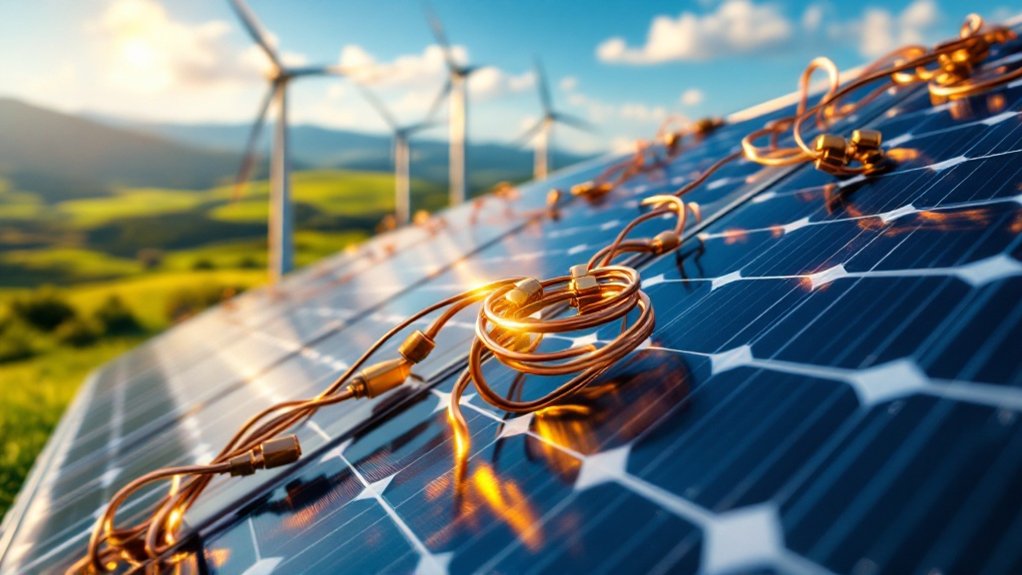
Numerous renewable energy technologies rely heavily on copper, a versatile metal that’s becoming increasingly crucial in the world’s shift to clean power. Renewable energy systems use four to six times more copper than traditional power generation methods. This metal plays a critical role in efficiently generating, transmitting, and distributing clean energy across the globe.
Solar power systems require about 5.5 tons of copper per megawatt of energy produced. The metal is used throughout solar panels in wiring, interconnections, inverters, and transformers. Copper helps enhance the conductivity and efficiency of solar cells, making them more productive. When recycled copper is used in solar panel production, it reduces energy use by an impressive 85%. Photovoltaic technology has become increasingly affordable as advances in manufacturing make these systems more accessible for residential and commercial applications.
Wind turbines also depend on copper, with a single turbine containing between four and six tons of the metal. Offshore wind farms use even more – about 10.54 tons per megawatt. Copper is crucial in wind generators, power cables, and transformers. Its exceptional electrical conductivity ensures minimal energy losses during power transmission from offshore locations to mainland grids. Experts predict the demand for copper in wind energy will grow by 648% by 2050.
Energy storage and grid infrastructure require substantial amounts of copper too. The metal is essential for batteries in electric vehicles and grid storage systems. It improves conductivity in power cables and enables smart grid technologies that manage energy flow efficiently.
The economic impact of copper in renewable energy is significant. The global copper scrap market was valued at $60.02 billion in 2021 and is expected to grow at 5.2% annually through 2030. According to IRENA, copper demand for green energy applications will increase by 275% until 2050. This growth creates new jobs in the recycling industry while reducing the need for new mining.
Copper’s environmental benefits are equally important. It’s 100% recyclable without losing performance, helping reduce CO2 emissions in renewable technology production.
However, challenges remain. As demand outpaces current production, the industry faces potential supply constraints. This has prompted increased research into better recycling methods and possible copper alternatives for the future.
Frequently Asked Questions
How Does Copper Mining Impact Local Ecosystems?
Copper mining severely damages local ecosystems through multiple pathways.
It pollutes water with toxic chemicals and acid drainage, contaminating rivers and groundwater.
Mining operations destroy habitats through deforestation and land degradation.
Air pollution from mining dust and smelting harms plant and animal life.
Soil becomes contaminated with heavy metals.
These combined impacts can devastate biodiversity, affecting everything from microorganisms to wildlife populations.
What Are Copper’s Recycling Rates Compared to Other Metals?
Copper recycling lags behind several other common metals.
With an end-of-life recycling rate of 40-50%, copper falls short compared to lead (95%), steel (85%), and aluminum (75%). However, it outperforms zinc, which sits at around 30%.
Despite these lower rates, copper can be recycled indefinitely without losing its properties.
Currently, recycled copper meets about 32% of global demand, with over 30% of copper products containing recycled content.
Can Alternatives Replace Copper in Renewable Technologies?
Several alternatives can replace copper in renewable technologies.
Aluminum offers 60% of copper’s conductivity while being lighter and cheaper.
Carbon nanotubes provide higher conductivity and better resistance properties.
The emerging material Galvorn is stronger than steel, lighter than aluminum, and its conductivity doubles every three years.
These alternatives help address copper supply challenges while often offering environmental benefits like reduced mining impacts and circular production potential.
How Will Copper Prices Affect Renewable Energy Costs?
Rising copper prices will increase renewable energy costs in varying degrees.
Solar projects face 0.8-1.2% higher costs for every 10% copper price increase.
Wind power, especially offshore facilities with up to 30 tons of copper per turbine, could see 1.5-2% cost increases with a 20% copper price jump.
Energy storage systems may experience 2-3% higher costs from a 30% copper price spike.
These increases complicate long-term project planning for renewables.
Is There Enough Copper to Meet Future Renewable Energy Demands?
Current copper supplies won’t meet future renewable energy demands. Experts predict a 6.5 million metric ton shortfall by 2031.
Clean energy copper requirements will grow from 6.3 million tons today to 16 million tons by 2040.
Challenges include declining ore grades, slow mine development, and stricter environmental standards.
The industry’s working on solutions like increased exploration, better recycling, and copper-efficient technologies to address this growing gap.
